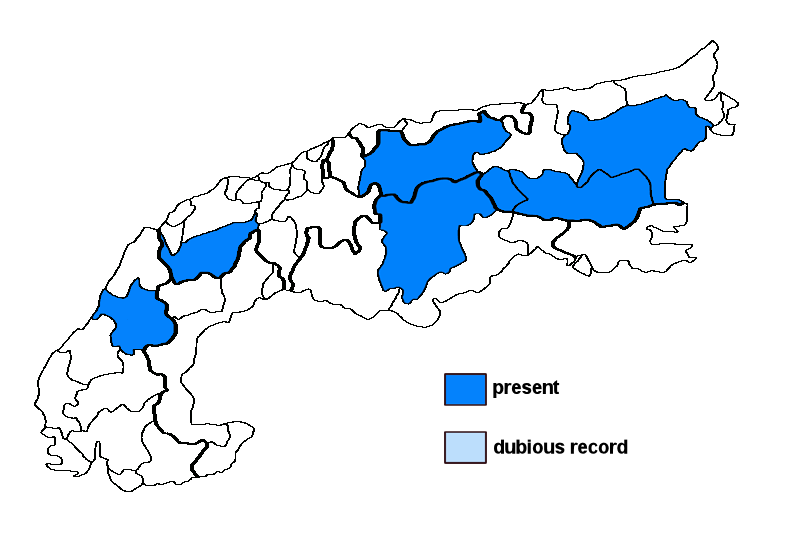Miriquidica instrata (Nyl.) Hertel & Rambold
Syn.: Biatora instrata (Nyl.) Arnold, Lecidea instrata Nyl., Lecidea subobscura H. Magn.
Lichenised.
Substrate: siliceous rocks,
Altitudinal range: from the montane belt (potential vegetation: deciduous forests dominated by Fagus sylvatica and closed coniferous forests with Picea abies) to the alpine belt (potential vegetation: treeless Alpine grasslands and tundras, to the lower limit of perennial snow and the equilibrium line of glaciers)
Note: perhaps this is the primary species to M. invadens. It has minute areolae which are brown with a paler margin, and bear immersed, brown apothecia; on inclined faces of siliceous rocks, initially a parasite on other crustose lichens, such as species of Aspicilia, Lecidea, Lecanora and Rhizocarpon; widespread in the Holarctic region but rare, including in the Alps, where it occurs from the montane to the alpine belt.
Austria: Tirol; Kärnten; Steiermark; Switzerland: Valais; France: Savoie; Italy: Trentino Alto Adige;





